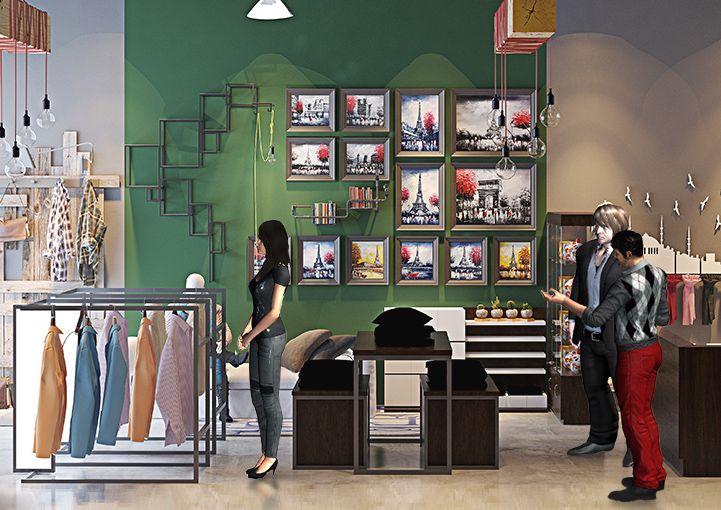INSTANT ON NOW AVAILABLE - Experience Time to first frame as quick as 2 SECONDS
Do Digital Marketers Need a Refresher on Connecting with Buyers Online?

What if there were a line item on every company’s P&L for “attention”? That thing that focuses our cognitive abilities on one task or piece of information and temporarily lets everything else go fuzzy.
Instead, marketers divide up the expenses and revenue of attention in terms of traditional media spend, PPC spend, agency partners, and other marketing expenses. All of these dollars are wasted if the people deploying them don’t understand that what they’re essentially buying is attention.
How does attention on the internet work?
We are just beginning to understand how attention on the internet works. And what we do know about how attention works in general offers clues that we can apply.
Attention operates like a camera. When we focus on a specific area, we get a high-resolution snapshot of that space while the rest of the field becomes a low-resolution image.
You could also think of attention as a capability guarded by neurons that serve as either bouncers or hype men. The bouncer neurons keep out any irrelevant information. The hype men neurons draw attention to what we’re trying to focus on.
This may seem like common sense, but it’s something that marketers tend to forget while developing their campaigns. Marketers tend to think in terms of stages like Attract, Engage, and Delight. They spend 8 hours a day trying to understand their brand’s solutions, their customers’ problems, and the benefits of their products. They assume that they only have to take their audience – prospective customers – over the finish line with a description of their solution or proof points. Even when they start by articulating the customers’ problem and enticing them with an explanation (e.g. attraction stage content), they are still assuming too much: That their customer even cares to address this problem.
So how do we address this? By appealing to consumers’ emotions. Again, it’s an obvious answer and something that people have known for a long time: Emotion is more powerful than reason. But it’s a piece of wisdom that’s getting lost in the variety of tools, tactics, and technologies available to marketers.
Plus, this attempt to appeal to consumers’ emotions on the internet is harder, because the novelty of today’s online experience has worn off. The wonder of a high-resolution photo or video on the internet is old news, so it’s hard to create that pull.
So how can brands appeal to consumers’ emotions online?
By providing a novel approach to one of the oldest human needs: The need to connect.
Developing professional and personal relationships online has been normalized
The web has gone through three major shifts. Web 1.0 was the read-only phase, where users simply accessed content online. Web 2.0 brought the ability to easily upload content and communicate with others without deep technology knowledge. This shift took the internet from something used by so few people that its pages could be cataloged in a physical directory to a booming network of billions of pages. Web 3.0 will see computers begin to interpret data with the same abilities as humans.
But that shift to Web 3.0 is still in its infancy. When we look at Web 2.0, the version of the internet most people are familiar with, we have a clear roadmap for its high user adoption:
- People could easily connect with other people
- People could navigate user-friendly, intuitive platforms (e.g. Facebook, Wordpress, Twitter) in order to connect and share with others
These social networks and hubs of user-generated content have also changed the game for brands, especially given the accelerated digital adoption rates of 2020.
- 72%. The number of respondents in one study who said that they increased their social media consumption during the pandemic.
- 43%. The number of respondents in one study who said they increased the amount of content they post on social media during the pandemic.
- Instagram, TikTok, and YouTube. These were the preferred platforms during the pandemic because unlike social media sites driven by news and updates like Facebook and Twitter, they offered an escape during the pandemic’s challenges.
- 82%. The number of respondents in one study who said social media is the channel where they receive most of their information about brands and products.
- 66%. The number of respondents in one study who said that social media heavily impacts their decision to buy from a particular brand.
These statistics offer another answer to why social media and interactive platforms attract so much attention online: Because the world (and its microcosm, the internet) is overwhelming. Social media offers the opportunity – if not the guarantee – of connection and interactivity. Even from home, you can see what others are up to, how they feel about a certain topic, and how world events are affecting people at an individual level. It’s difficult for consumers to find a similar experience on the internet. Even if it’s not the most informative or well-curated option, social media delivers a medium for immersiveness and interaction on the internet. But that doesn’t mean these mediums are necessarily holding consumers’ attention:
- 0.09%. Facebook engagement rate per post across all industries
- 1.22%. Instagram engagement rate per post across all industries
- 0.045%. Instagram engagement rate per post across all industries
- 1.3%. The average click-through rate for social media ads
Social media is not the only place for interactivity and immersiveness online
Interestingly, there’s another area that manages to attract and hold consumers’ attention online, primarily because it offers the opportunity for both interaction and immersiveness: video games.
Video games give people a way to, as writer Keith Stuart explains, “go directly to the place where our favourite subjects are being discussed, then get acquainted with people who share our passions” and where “your chances of making friends are magnified by orders of magnitude over the old methods of finding a peer group."2 They offer a meaningful way for people to connect through collaboration, problem-solving, and information sharing, something that doesn’t necessarily occur on social media. Unsurprisingly, there’s a huge branding and digital marketing opportunity here.
- 70%. of Americans play a video game of some kind every day
- 20%. How much the in-game advertising market will grow over the next 3 years.
- Twitch is the fourth-largest source of online peak time internet traffic in the U.S. behind Google, Netflix, and Apple
- Advergaming – where brands create video games that provide consumers an enjoyable way to engage with their brand – is on the rise, particularly among luxury brands
- Native and programmatic advertising is making its way into games as well as dynamic in-game advertising that allows media buyers to make real-time, customized purchases of advertising space within video games
- Interactive technologies like augmented reality can capture consumers’ attention for over 85 seconds, boost interaction by 20 percent, and increase click-through rates all the way to purchase by 33 percent
All of this suggests that brands have to do more to capture consumers’ attention, particularly by delivering experiences that are more than just digital, but interactive and immersive as well. It means that attention on the internet is not as mysterious as it may seem, but it is a mysterious formula that combines interactivity, emotion, and some ‘x’ factor such as novelty or user experience. At the moment, that ‘x’ factor is lifelike environments with high-fidelity graphics that users can interact with and explore.
Read more: How to integrate game engines into your e-commerce and digital marketing strategy
What’s interesting is that brands are not limited by the advertising space of a popular video game. They can tap into consumers’ desire to explore, connect, and escape by creating their own immersive experiences. Plus, technology has made it possible to do so at a fraction of the traditional cost.


